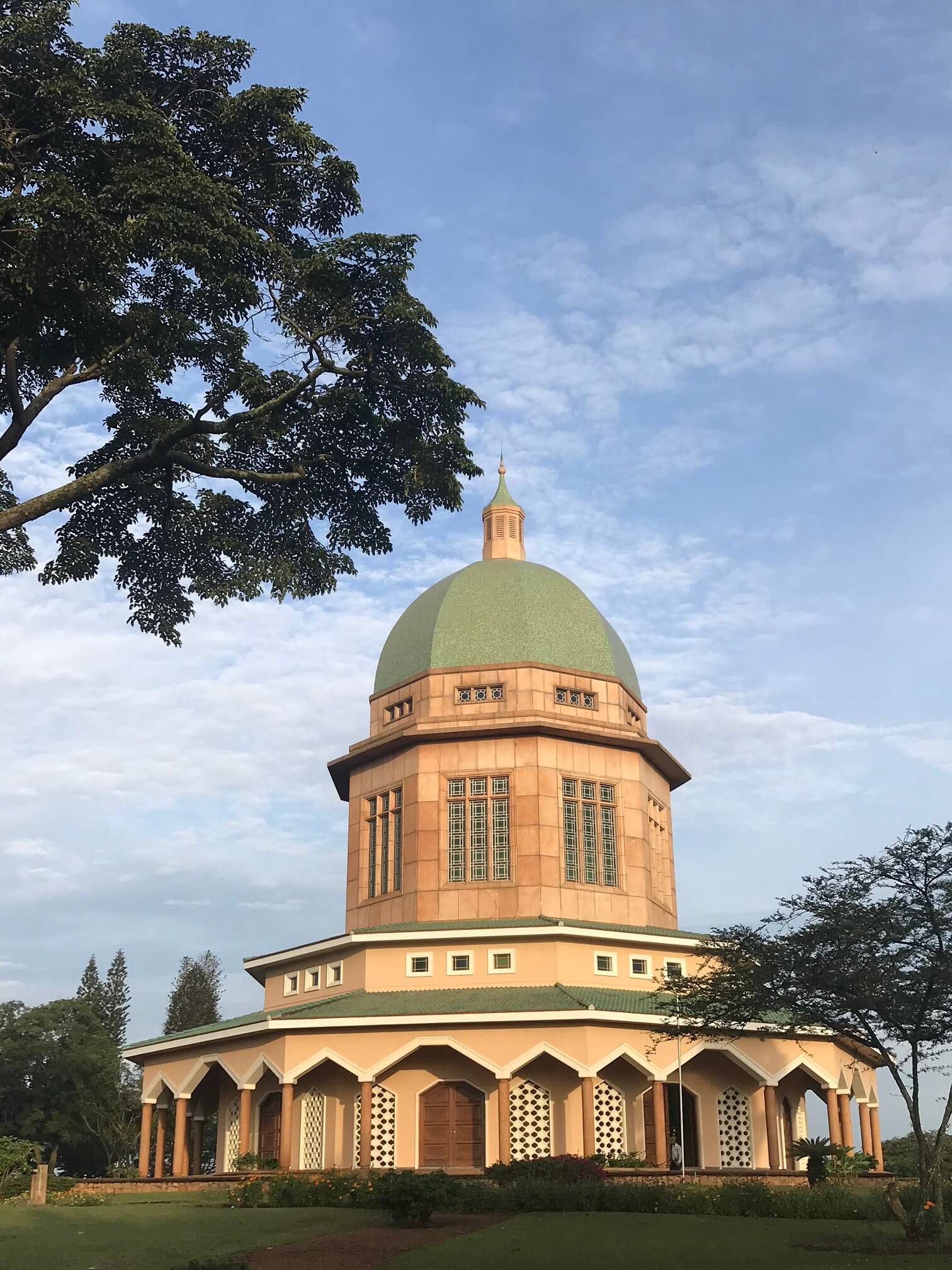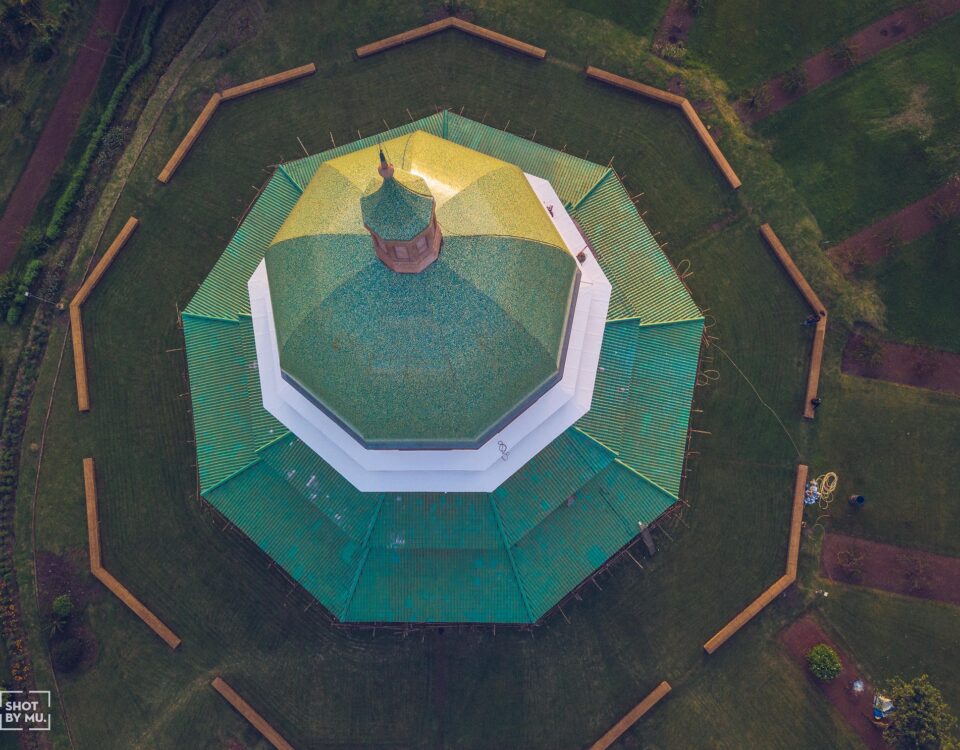House of Worship in Uganda
Due to the hospitality of the people of Uganda and the love and freedom from prejudice of the early teachers, the Bahá’í Faith in Uganda experienced rapid growth from August 1951 up until the 1970’s. By May 1954 there were over 670 Bahá’ís from 20 tribes and backgrounds and as a result, the head of the Faith, Shoghi Effendi called for the erection of the continental House of Worship in Kampala. Known as the Mother Temple of Africa, the foundation stone was laid on the 26th of January 1958 and it was dedicated three years later on the 14th and 15th of January 1961 by Ruhiyyih Khanum Rabbaní and Musa Banani. The inaugural service held for the Temple brought about 1,500 attendees including some 225 African Bahá’ís from Uganda, Kenya, Tanganyika, Ruanda Urundi, Ethiopia, Northern Rhodesia, Swaziland, and South Africa, some 90 Iranian Bahá’ís, 4 representatives of the British National Spiritual Assembly and one representative of the American National Spiritual Assembly.


The design of the Mother Temple of Africa harmonizes closely with the landscape. In its profile the Temple resembles the shape of a traditional African hut. Its flaring eaves create a circular porch on the lowest exterior level of the building, providing protection from the seasonal extremes of weather chill winds, driving rains, dust, and high heat common to the area. The exterior walls of the ground floor of the structure are pierced by doors and by windows patterned with hexagonal units of glass. A series of piers supports the steel-reinforced concrete, nine sided, unribbed dome, which is capped by a graceful lantern. A distinctive feature is the use of color in decorating the House of Worship. On the exterior, green mosaic tiles cover the dome and the eaves. On the interior, the dome is blue, and the walls, glass windows, and decorations are in shades of white, green and amber colors that “seem to melt into the hues of the sun-drenched fields, hills, clouds and sky outside.”
